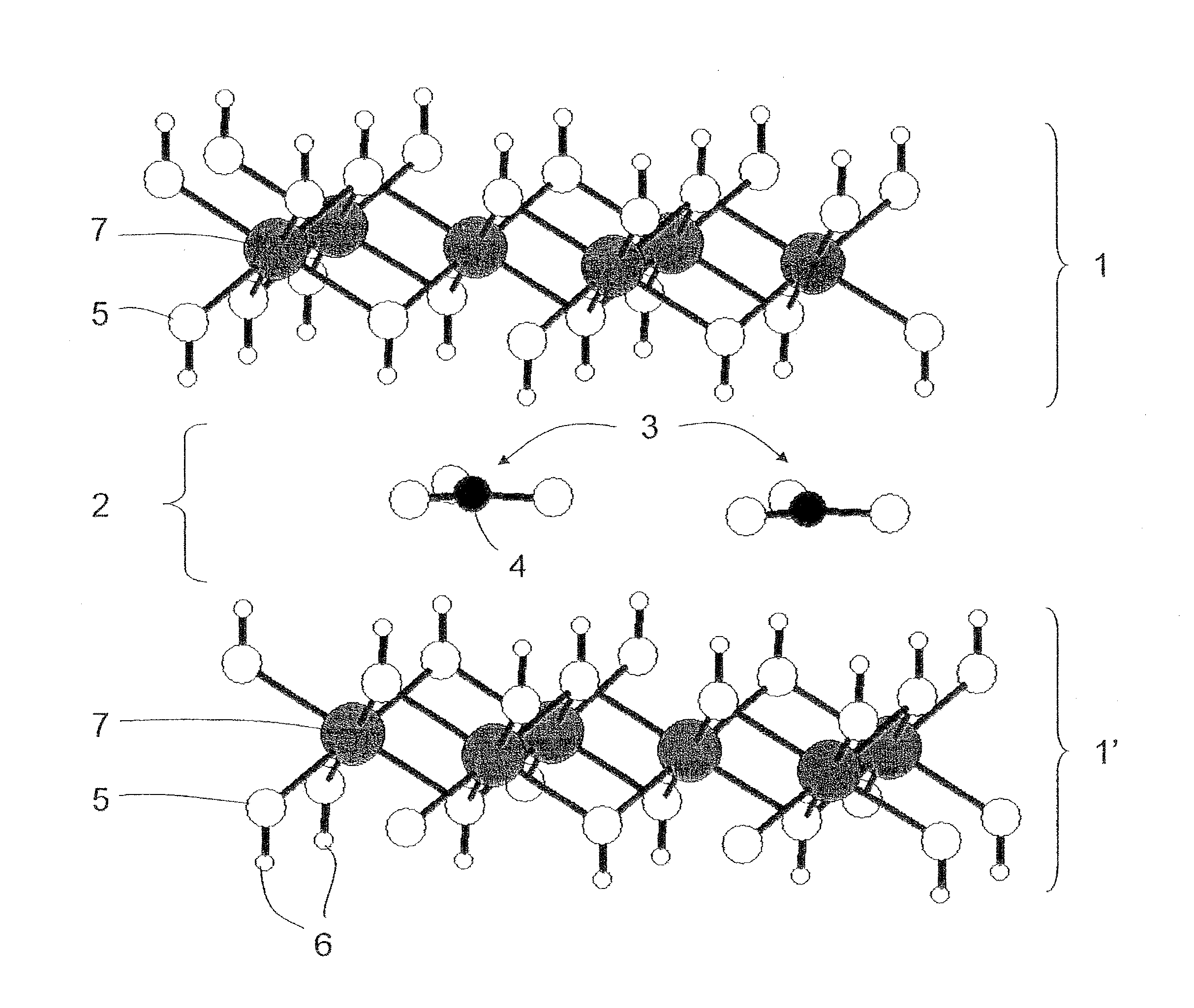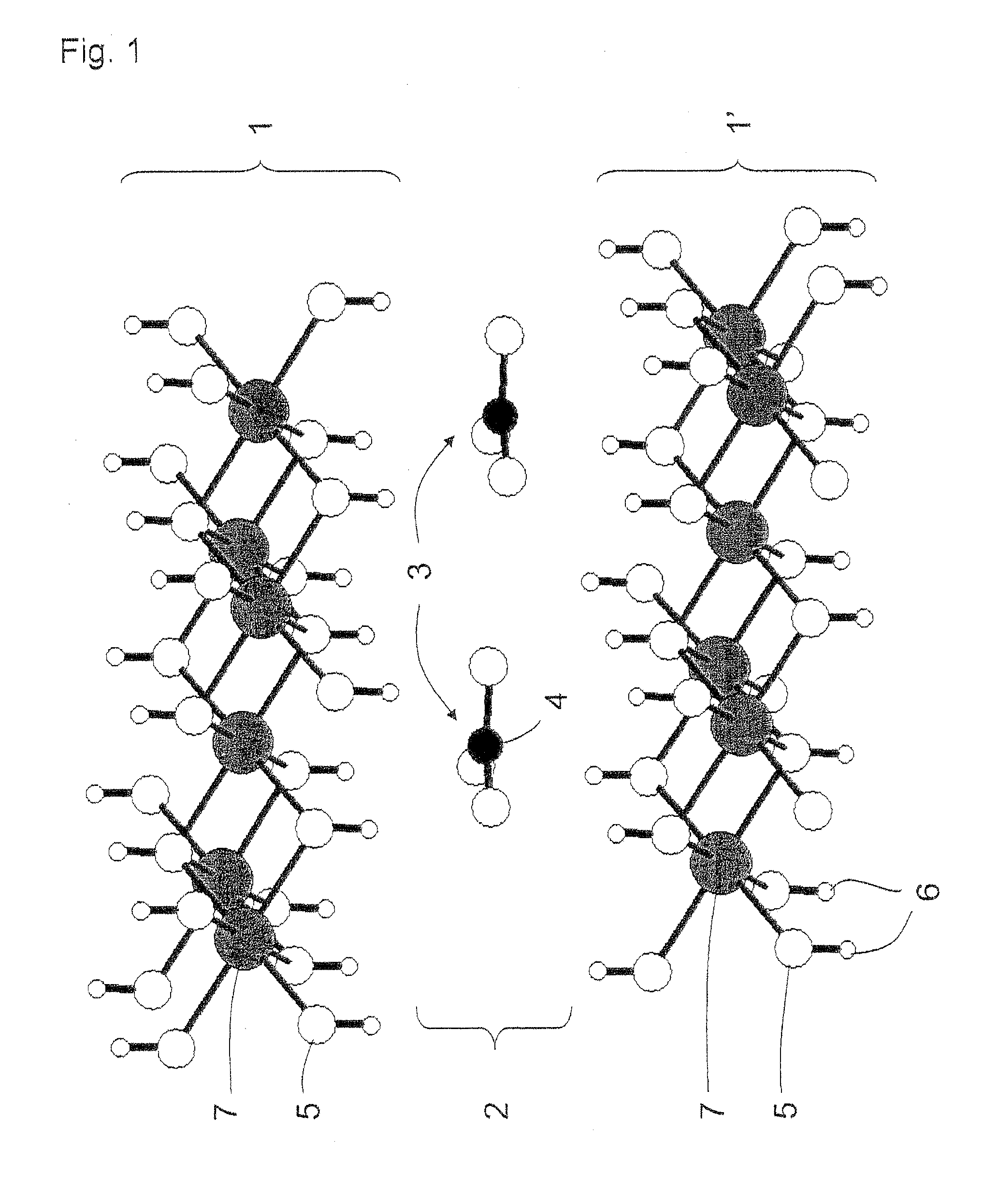Palladium-modified hydrotalcites and their use as catalyst precursors
- Summary
- Abstract
- Description
- Claims
- Application Information
AI Technical Summary
Benefits of technology
Problems solved by technology
Method used
Image
Examples
examples
Preparation of Pd-Hydrotalcites
[0082]The nitrates of Pd(II), Mg(II) and Ga(III) were dissolved in molar ratios of Pd:Mg:Ga=x:70-x:30 (x=0.0-5.0) in water to give a salt solution having a total metal salt concentration of 0.1 M. By adding a mixed aqueous NaOH / Na2CO3 solution with a total concentration of 0.345 M, or a pure 0.345 M aqueous Na2CO3 solution, the Pd-hydrotalcite was precipitated, as follows.
[0083]The above 0.1 M metal salt solution (pH 0-1) was fed at a constant rate (16 g / min) into a 2 L stirred reactor containing 300 mL H2O or highly diluted aqueous Na2CO3 solution (pH 8.5). Then, the basic precipitating agent (0.345 M aqueous NaOH / Na2CO3 solution or 0.345 M aqueous Na2CO3 solution) was charged by an automatic feedback loop (laboratory reactor LabMax, Mettler Toledo) such that the pH in the reactor remained constant near 8.5 after an induction phase of <5 min. After 40 min, the precipitation was stopped and the brown precipitate was aged under stirring in the mother li...
PUM
| Property | Measurement | Unit |
|---|---|---|
| Temperature | aaaaa | aaaaa |
| Temperature | aaaaa | aaaaa |
| Fraction | aaaaa | aaaaa |
Abstract
Description
Claims
Application Information
 Login to View More
Login to View More - R&D
- Intellectual Property
- Life Sciences
- Materials
- Tech Scout
- Unparalleled Data Quality
- Higher Quality Content
- 60% Fewer Hallucinations
Browse by: Latest US Patents, China's latest patents, Technical Efficacy Thesaurus, Application Domain, Technology Topic, Popular Technical Reports.
© 2025 PatSnap. All rights reserved.Legal|Privacy policy|Modern Slavery Act Transparency Statement|Sitemap|About US| Contact US: help@patsnap.com



